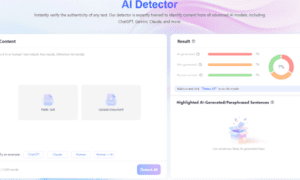India’s digital payment landscape is experiencing unprecedented growth, with the market projected to reach $42.61 billion by 2033. As the world’s second-largest internet user base drives this transformation, businesses worldwide are recognizing the immense potential of the Indian payment ecosystem. However, beneath this remarkable growth lies a complex web of challenges that many international merchants struggle to navigate when entering this lucrative market.
The $10 Trillion Opportunity and Its Hidden Complexities
Recent industry reports indicate that India’s digital payments market will expand more than threefold from the current $3 trillion to $10 trillion by 2026, with digital payments constituting two out of every three transactions. This explosive growth is fueled by over 836 million active internet users, government initiatives like Digital India, and a FinTech adoption rate of 87% compared to the global average of 64%.
Yet for international businesses, this opportunity comes with significant barriers. The Indian payment ecosystem is uniquely complex, with over 150 different payment methods including UPI (Unified Payments Interface), RuPay cards, mobile wallets, net banking, and emerging technologies like Central Bank Digital Currency (CBDC). Each payment method requires specific technical integrations, compliance with Reserve Bank of India (RBI) regulations, and deep understanding of local consumer preferences.
Critical Market Pain Points Hampering Business Growth
1. Technical Integration Complexity
The Indian market demands support for multiple payment protocols simultaneously. UPI alone processes over 130 billion transactions annually, but merchants must also integrate with various digital wallets, card networks, and banking systems. Many international payment providers struggle with the technical complexity of supporting India’s diverse payment infrastructure.
2. Regulatory Compliance Challenges
India’s payment sector operates under strict RBI guidelines, requiring PCI DSS certification, KYC compliance, and adherence to data localization requirements. The regulatory framework continues evolving, with new guidelines for digital currencies and cross-border payments creating additional compliance burdens.
3. Settlement and Currency Issues
International merchants face significant challenges with settlement cycles, currency conversion, and fund repatriation. Traditional payment gateways often impose lengthy settlement periods and unfavorable exchange rates, impacting cash flow and profitability.
4. Security and Fraud Prevention
With the rapid growth of digital payments, fraud attempts have also increased. Businesses need robust security measures including real-time transaction monitoring, AI-powered fraud detection, and multi-factor authentication to protect both merchants and customers.
5. Geographic Coverage Gaps
India’s vast geography spans 29 states with varying levels of digital infrastructure. Many payment solutions struggle to provide consistent coverage across tier-2 and tier-3 cities, where much of the growth potential lies.
How Advanced Payment Systems Are Solving These Challenges
Forward-thinking payment platforms are addressing these market pain points through comprehensive, localized solutions. The most effective approaches combine deep local expertise with advanced technology infrastructure.
Unified API Integration: Modern payment systems offer single-point integration that supports all major Indian payment methods. This eliminates the need for merchants to manage multiple integrations while ensuring compatibility with UPI, major card networks, digital wallets, and emerging payment technologies.
Comprehensive Compliance Framework: Leading platforms maintain automatic compliance with RBI regulations, PCI DSS standards, and data localization requirements. This includes real-time updates as regulations evolve, removing the compliance burden from international merchants.
Advanced Security Infrastructure: AI-powered fraud detection systems now process millions of transactions in real-time, identifying suspicious patterns and preventing fraudulent activities. Biometric authentication and secure tokenization provide additional security layers while maintaining user experience.
Pan-India Coverage: Sophisticated payment networks now cover all 29 Indian states, including remote areas with limited connectivity. This ensures merchants can accept payments from customers regardless of their location, from metropolitan cities to rural villages.
Transparent Pricing and Fast Settlements: Modern platforms offer competitive, transparent pricing with no hidden fees and accelerated settlement cycles. Some providers now offer same-day settlements, significantly improving merchant cash flow.
The Future of Indian Digital Payments
As India continues its digital transformation, several trends are shaping the payment landscape. The integration of 5G technology will enable new payment experiences, while the adoption of Central Bank Digital Currency will create additional opportunities for innovation. Cross-border payment corridors are expanding, with UPI now operational in multiple countries including Singapore, UAE, and France.
International businesses that establish strong footholds in the Indian payment ecosystem today will be best positioned to capitalize on future growth. However, success requires partnering with payment providers that truly understand the local market while offering the technological sophistication needed to navigate this complex landscape.
The Indian digital payment revolution represents one of the most significant fintech opportunities globally. Businesses that can effectively navigate the market’s complexities while leveraging its immense potential will find themselves at the forefront of a transformation that extends far beyond India’s borders. As the market continues evolving toward a fully digital economy, the organizations that invest in comprehensive, localized payment solutions today will reap the benefits of this $10 trillion opportunity tomorrow.
The Indian digital payment revolution represents one of the most significant fintech opportunities globally. Businesses that can effectively navigate the market’s complexities while leveraging its immense potential will find themselves at the forefront of a transformation that extends far beyond India’s borders. As the market continues evolving toward a fully digital economy, the organizations that invest in comprehensive, localized payment solutions today will reap the benefits of this $10 trillion opportunity tomorrow.
For businesses looking to capitalize on this massive opportunity, understanding and implementing robust 印度支付 solutions is crucial. The companies that master 印度支付 integration today will be best positioned to capture market share in tomorrow’s digital economy.
The author specializes in digital payment systems and fintech market analysis, with particular expertise in emerging market payment infrastructure and cross-border transaction solutions.





























